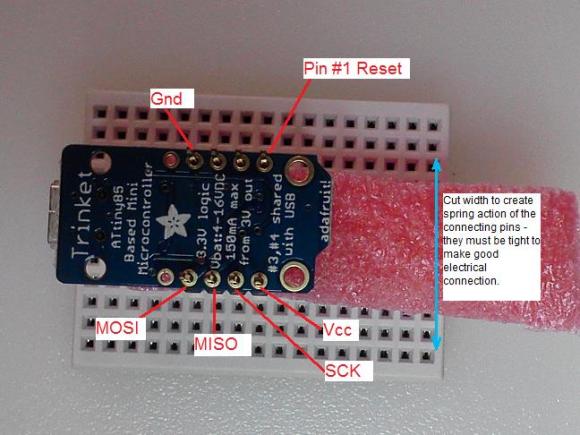[Update 19/08/2013 - Exciting! Boards are shipping this week - review to follow!]
[Update 19/03/2013 - the project is now fully funded. Initial review here!]
Introduction
It’s a solid fact that there are quite a few variations on the typical Arduino Uno-compatible board. You can get them with onboard wireless, GSM, Zigbee and more – however all with their own issues and specific purposes. But what if you wanted a board that was physically and electrically compatible with an Arduino Uno – but with much more SRAM, more EEPROM, more flash, more speed – and then some? Well that (hopefully) will be a possibility with the introduction of the “Goldilocks” board on Pozible by Phillip Stevens.
What’s Pozible?
Pozible is the Australian version of Kickstarter. However just like KS anyone with a credit card or PayPal can pledge and support projects.
What’s a Goldilocks board?
It’s a board based around the Atmel ATmega1284p microcontroller in an Arduino Uno-compatible physical board with a microSD card socket and a few extras. The use of the ’1284p gives us the following advantages over the Arduino Uno, including:
- 16 kByte SRAM = 8x Uno SRAM – so that’s much more space for variables used in sketches – great for applications that use larger frame buffers such as Ethernet and image work;
- 2 kByte EEPROM = 2 x Uno EEPROM – giving you more space for non-volatile data storage on the main board;
- 128 kByte flash memory = 4 x Uno – giving you much, much more room for those larger sketches;
- Two programmable USARTS – in other words, two hardware serial ports – no mucking about with SoftwareSerial and GSM or GPS shields;
- Timer 3 – the ’1284p microcontroller has an extra 16-bit timer – timer 3, that is not present on any other ATmega microcontroller. Timer 3 does not have PWM outputs (unlike Timer 0, Timer 1, and Timer 2), and therefore is free to use as a powerful internal Tick counter, for example in a RTOS. freeRTOS has already been modified to utilise this Timer 3;
- JTAG interface – yes – allowing more advanced developers the opportunity to debug their code;
- better PWM access – the 1284p brings additional 8-bit Timer 2 PWM outputs onto PD, which creates the option for 2 additional PWM options on this port. It also removes the sharing of the important 16-bit PWM pins with the SPI interface, by moving them to PD4 & PD5, thus simplifying interface assignments;
- Extra I/O pins – the 1284p has additional digital I/O pins on the PB port. These pins could be utilised for on-board Slave Select pins (for example), without stealing on-header digital pins and freeing the Arduino Pin 10 for Shield SPI SS use exclusively;
Furthermore the following design improvements over an Arduino Uno:
- adding through-holes for all I/O – allowing you to solder directly onto the board whilst keeping header sockets;
- replicate SPI and I2C for ease of use;
- microSD card socket – that’s a no-brainer;
- link the ATmega16u2 and ATmega1284p SPI interfaces – this will allow the two devices to work in concert for demanding multi-processing applications, involving USB and other peripherals;
- Fully independent analogue pins, including seperate AVCC and GND – helps reduce noise on the ADC channels for improved analogue measurement accuracy;
- move the reset button to the edge of the board – another no-brainer
- clock the board at 20 MHz – that’s an extra 4 MHz over a Uno. And the use of a through hole precision crystal (not a SMD resonator) allows the use of after market timing choices, eg 22.1184 MHz for more accurate UART timings.
What does it look like?
At the moment the board mock-up looks like this:

If funding is successful (and we hope it will be) the Goldilocks will be manufactured by the team at Freetronics. Apart from being a world-leader in Arduino-compatible hardware and systems, they’re the people behind the hardware for Ardusat and more – so we know the Goldilocks will be in good hands.
Will it really be compatible?
Yes – the Goldilocks will be shipped pre-programmed with an Arduino compatible boot-loader, and the necessary Board description files will be available to provide a 100% compatible Arduino IDE experience.
Conclusion
If you think this kind of board would be useful in your projects, you want to support a good project – or both, head over to Pozible and make your pledge. And for the record – I’ve put my money where my mouth is 
Please note that I’m not involved in nor responsible for the Goldilocks project, however I’m happy to promote it as a worthwhile endeavour. In the meanwhile have fun and keep checking into tronixstuff.com. Why not follow things on twitter, Google+, subscribe for email updates or RSS using the links on the right-hand column? And join our friendly Google Group – dedicated to the projects and related items on this website. Sign up – it’s free, helpful to each other – and we can all learn something.
The post Introducing Goldilocks – the Arduino Uno-compatible with 1284p and uSD card appeared first on tronixstuff.











